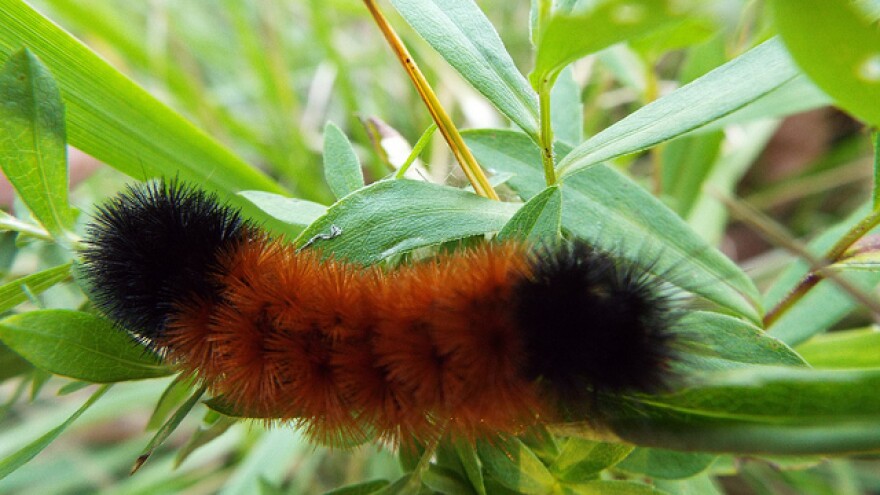On an autumn walk through Schooley Mill Park in Howard County, I really had to watch my step. Every few feet or so, my well-worn hiking boots endangered another tiny black-and-copper critter crisscrossing the trail ahead of me.
Reaching a stopping point at a sunny spot, I picked up one of the 2-inch-long caterpillars before it could reach its destination. Its soft, bristled body tickled my hand as it motored across, intent on completing its journey before cold weather truly arrives. “How will our winter be, woolly bear?” I asked it.
The woolly bear caterpillar – also called a woolly worm, black-ended bear or fuzzy worm – may be a small animal, but it has a grand reputation. Regional folklore contends that the relative amounts of black and ruddy brown on the short, stiff hairs of a woolly bear caterpillar indicate the severity of the coming winter.





